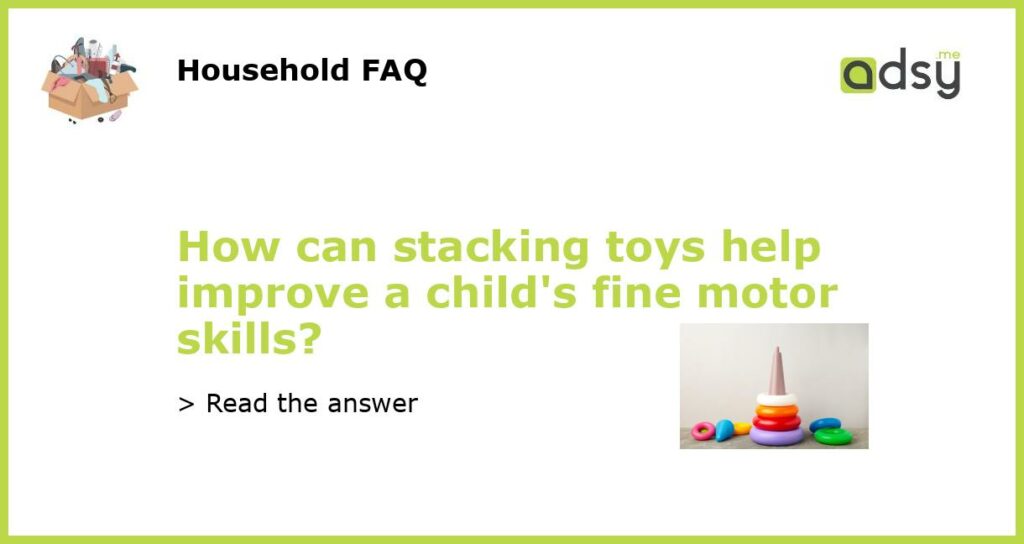Stacking Toys: A Fun Way to Develop Fine Motor Skills in Children
Fine motor skills are an essential part of a child’s development, enabling them to perform tasks that require precise movements of the hands and fingers. Stacking toys, such as blocks, cups, and rings, can be a fantastic tool for stimulating and improving these skills in an enjoyable and engaging way. In this article, we will explore the various ways in which stacking toys can help enhance a child’s fine motor skills.
Enhancing hand-eye coordination
Stacking toys require children to carefully coordinate their hand movements with their visual perception. As they pick up and manipulate the pieces to stack them, their eyes track the movements of their hands. Over time, this repetitive practice strengthens the connection between their hands and eyes, improving their hand-eye coordination. Improved hand-eye coordination has far-reaching benefits beyond stacking toys, as it is a fundamental skill required for various daily tasks, such as handwriting, tying shoelaces, and using utensils.
Developing finger dexterity
Manipulating the pieces of a stacking toy involves using the small muscles in the fingers and hands, which helps develop finger dexterity. As children practice picking up, grasping, and manipulating the pieces to stack them, they are strengthening their finger muscles and improving their ability to control their movements. This improved finger dexterity will not only help them with stacking toys but will also assist in other activities such as playing musical instruments, typing, and using scissors.
Practicing hand strength and grip
Stacking toys often require a certain amount of hand strength to manipulate the pieces effectively. As children repeatedly grip and hold the pieces to stack them, they are strengthening their hand muscles. This practice helps develop their overall hand strength and grip, which is crucial for activities such as writing, cutting with scissors, and opening jars or bottles. Stronger hand muscles also contribute to better control and stability of the hand, allowing children to perform tasks with greater precision.
Encouraging problem-solving skills
Stacking toys can present various challenges and problems for children to solve. For example, they may need to determine the correct order or sequence in which to stack the pieces to create a stable structure. This encourages children to use their problem-solving skills, spatial awareness, and visual perception to analyze and solve the puzzle. As they experiment with different strategies and approaches, they are actively engaging their minds and developing critical thinking skills. These problem-solving abilities are transferable to other areas of their lives, helping them tackle challenges and find solutions in different contexts.
Fostering creativity and imagination
Stacking toys also offer opportunities for imaginative play, allowing children to explore their own creativity and invent new structures or designs. As children stack the pieces, they can experiment with different combinations, heights, and patterns, giving free rein to their imagination. This creative play not only engages their fine motor skills but also stimulates their cognitive and emotional development. It encourages them to think outside the box, explore different possibilities, and express their unique ideas, fostering their overall development.
In conclusion, stacking toys are much more than just a source of entertainment for children. They provide a range of benefits that contribute to the development of their fine motor skills, hand-eye coordination, finger dexterity, hand strength, problem-solving skills, and creativity. By incorporating these toys into a child’s playtime, parents and caregivers can actively support their development while ensuring a fun and engaging experience.






